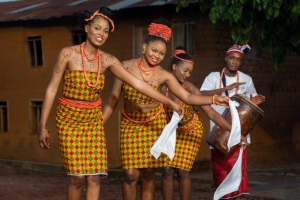Introduction
Madagascar is a dream destination known for its unique wildlife, breathtaking landscapes, and rich culture. However, like any travel destination, it comes with safety considerations. While most trips are trouble-free, being aware of potential risks and taking precautions can ensure a smooth and enjoyable journey. This guide provides essential safety tips for travelers in Madagascar.
1. General Safety in Madagascar
Madagascar is generally safe for tourists, but petty crime and occasional unrest can occur. Keep these general safety tips in mind:
✅ Stay alert in cities: Pickpocketing and bag-snatching are common in busy areas, especially in Antananarivo (Tana). Keep valuables secure and avoid displaying expensive items.
✅ Avoid walking alone at night: Streets can be poorly lit, and opportunistic crime increases after dark.
✅ Use registered taxis: Always choose official taxis or transport arranged by your hotel rather than unmarked vehicles.
✅ Be cautious with friendly strangers: Scams targeting tourists do exist, especially those involving fake tour guides or exaggerated prices.
2. Health & Medical Safety
Health risks in Madagascar include tropical diseases and limited medical facilities in rural areas. Prepare in advance to stay healthy:
✅ Vaccinations: Get vaccinated for yellow fever (if traveling from an endemic country), hepatitis A & B, typhoid, rabies, and tetanus.
✅ Malaria prevention: Madagascar is a malaria-prone country. Take anti-malarial medication, use insect repellent, and sleep under mosquito nets.
✅ Drink bottled or purified water: Avoid tap water and ice in drinks. Stick to bottled or filtered water to prevent stomach issues.
✅ Carry a basic first-aid kit: Include medications for common issues like diarrhea, fever, and pain relief.
🚑 Emergency medical services: Quality healthcare is limited outside major cities like Antananarivo. Travel insurance with medical evacuation coverage is highly recommended.
3. Road & Transportation Safety
Getting around Madagascar can be an adventure, but road conditions and transportation safety require extra attention:
✅ Road conditions are poor: Many roads are unpaved and become difficult to navigate during the rainy season (November–April).
✅ Hire a reputable driver: If renting a car, consider hiring a local driver. Driving conditions can be challenging due to lack of signage, reckless driving, and wildlife crossing.
✅ Public transport caution: Buses (taxi-brousse) are cheap but overcrowded and sometimes unsafe. Stick to reputable companies or private transfers.
✅ Domestic flights: Air Madagascar and Tsaradia operate domestic flights, but delays are common. Always check flight schedules in advance.
🚗 Self-driving tips: If you choose to drive, ensure you have an international driving permit (IDP), a reliable 4×4 vehicle, and local emergency contacts.
4. Wildlife & Nature Safety
Madagascar’s wildlife is one of its biggest attractions, but it’s important to respect nature:
✅ Keep a safe distance from animals: While lemurs may seem friendly, avoid feeding or touching them.
✅ Watch out for insects and snakes: Wear protective clothing and check your shoes before putting them on, especially in rural areas.
✅ Be cautious in remote areas: Always travel with a guide when visiting forests, national parks, or off-the-beaten-path locations.
🌊 Beach and marine safety:
✅ Strong currents: Some beaches have powerful currents and no lifeguards. Ask locals about safe swimming spots.
✅ Shark awareness: While rare, some coastal areas may have shark sightings. Stick to designated swimming areas.
5. Money & Scams to Watch Out For
Tourist-targeted scams exist in Madagascar, so be mindful of the following:
✅ Fake tour guides: Only book tours through reputable agencies or recommendations from hotels.
✅ Overcharging: Some vendors inflate prices for tourists. Always negotiate politely before buying souvenirs or hiring taxis.
✅ Credit card fraud: Cash is king in Madagascar. Use credit cards only at reputable hotels and ATMs inside banks.
✅ Pickpocketing: Be extra cautious in markets, bus stations, and crowded areas. Use a money belt or secure bag.
💰 Money safety tip: ATMs can be unreliable in some areas, so carry enough cash (Ariary or Euros/USD) for rural destinations.
6. Political & Social Awareness
Madagascar occasionally experiences protests and political instability. Keep these precautions in mind:
✅ Avoid large gatherings or demonstrations: These can turn unpredictable and are best avoided.
✅ Stay informed: Check travel advisories from your country before and during your trip.
✅ Respect local customs: Malagasy people value politeness and respect. Dressing modestly and greeting locals warmly can go a long way.
7. Emergency Contacts in Madagascar
Save these numbers in case of an emergency:
📞 Police: 117
🚑 Medical Emergency: 124
🔥 Fire Department: 118
🏥 Main Hospitals in Antananarivo:
- Hôpital Joseph Raseta Befelatanana (Public)
- Clinique La Francophonie (Private)
- Polyclinique d’Ilafy (Private)
🛡️ Travel Insurance: Always have comprehensive travel insurance that covers medical evacuation, theft, and trip cancellations.
Conclusion
While Madagascar is a stunning and rewarding destination, staying safe requires careful planning. By following these practical safety tips, you can enjoy everything from rainforests and lemurs to pristine beaches and vibrant local culture—all while staying healthy and secure.Final tip: Trust your instincts, stay informed, and embrace the adventure with a responsible approach. Happy travels!







